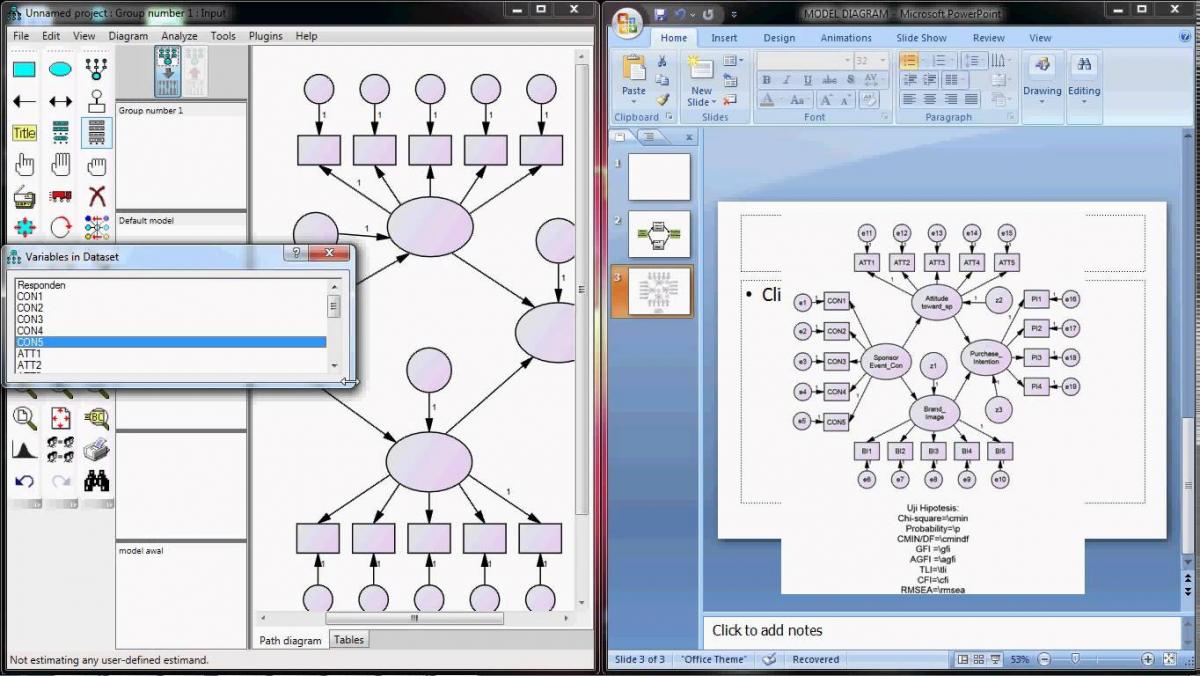
This course is designed as an advanced course in Structural Equation Modeling (SEM) for existing AMOS users.
Mr Philip Holmes-Smith (OAM) is the Director of School Research, Evaluation and Measurements Services (SREAMS), an independent educational research consultancy business. His research, evaluation and measurement interests lie in the areas of teacher effectiveness and school improvement, accountability models and benchmarking, improving the quality of teaching, using student performance data to inform teaching, and large-scale achievement testing programs. He is an experienced teacher of social science research methods and is a regular instructor at the ACSPRI programs. He also regularly teaches Structural Equation Modeling (SEM) and Multi-Level Analysis (MLA) at various universities around Australia.
Introductory SEM courses typically cover path analysis amongst observed variables, confirmatory factor analysis, and full SEM models with latent variables. This course covers a number of more complex models including models with mediating variables, models with interactions (moderation), ANOVA and ANCOVA models for latent outcomes, multi-level models (including repeated measures models) and mixture models.
Furthermore, introductory courses usually deal only with continuous, normally distributed variables. This course addresses the treatment of non-normal data and covers the analysis of observed categorical variables including ordered categorical (ordinal) variables such as Likert scales and unordered categorical (nominal) variables that may be binary (Male/Female, Problem Gambler/Non Gambler, Smoker/Non-Smoker, etc.) or polynomial (Australian/Indonesian/South African, etc.)
Detailed notes with worked examples and references will be provided as a basis for both the lecture and hands-on computing aspect of the course.
The target audience for this course is existing AMOS users.
Day 1
Revision of basic concepts.
This part of the course is a revision of a number of issues related to fitting structural equation models. Topics include a revision of factor analysis and regression, and a revision of model conceptualisation, path diagrams and model specification, model identification, parameter estimation, assessing model fit, model re-specification and model cross validation.
Day 2
Part A - Problem data and problem models.
Topics include treatment of missing data, Bayesian approaches in AMOS to the treatment of categorical variables; treatment of outliers; model fit for skewed data (Bollen-Stein adjusted p and bootstrapped standard errors); constraining parameters; non-positive definite matrices; negative error variances; and unidentified and inadmissible models.
Part B - Constructing composite variables for use in structural equation models.
This part of the course includes a revision of one-factor congeneric measurement modeling which is then extended to introduce the Holmes-Smith & Rowe approach to using composite variables in SEM. This topic also covers reliability and validity of composites created from one-factor congeneric measurement modeling.
Day 3
Advanced single-level models.
Topics include the testing of model and parameter invariance across groups (multi-group analysis), analysis of interactions with both categorical and continuous moderator variables, non-linear modeling, and mean structure analysis approaches to the Analysis of Covariance.
Day 4
Multi-level analysis and mixture models.
Introduction to the use of multilevel models to analyse data from hierarchically structured populations/samples (e.g., voters nested within electorates, students nested within classes within schools, employees nested within work groups within companies, etc.), or longitudinal studies (repeated measures nested within individuals). Topics include an overview of Multi-level regression and a detailed examination of the analysis of longitudinal data using latent growth curve modeling. Mixture modeling including latent class analysis and regression mixture modeling will also be introduced.
Day 5
Personal Research.
Finally, the course provides an opportunity for participants to work on their own research problems with the instructor’s assistance. Therefore, participants are encouraged to bring a data set and/or research problem with them.
This course may run in a computer lab, or you may be advised to bring your own laptop with specified software.
We will let you know in advance.
You are encouraged to bring a data set and/or research problem with you.
Participants must have completed an introductory course in Structural Equation Modeling using AMOS (or have had equivalent experience). Participants must be competent in specifying models in AMOS.
Other references include:
- Arbuckle, J. L. (2016). IBM SPSS AMOS 24 User’s Guide. Amos Development Corporation.
- Byrne, Barbara M. (2016). Structural Equation Modeling with AMOS: Basic Concepts, Applications, and Programming. (3rd Ed.) New York: Routledge Academic.
- Kline, Rex B. (2016). Principles and Practice of Structural Equation Modeling (4th Ed.). New York: Guilford Press.
Q: Do I have to have any prerequisites to do this course?
A: Yes, please refer to recommended background section.
Hard copy & electronic notes very good. Detailed course overview liked to all notes very good also. (Winter 2015)
Great balance between lectures & computer use. (Winter 2015)
The course was extremely useful and extremely well taught. I learnt so much more then I expected to. (Winter 2015)
The course is organised and presented brilliantly!! (Winter 2015)
New skill – consolidation of existing skills (Summer 2015)
Filled gaps in prior knowledge - Added value to my SEM skills. (Summer 2015)
The instructor's bound, book length course notes will serve as the course texts.
